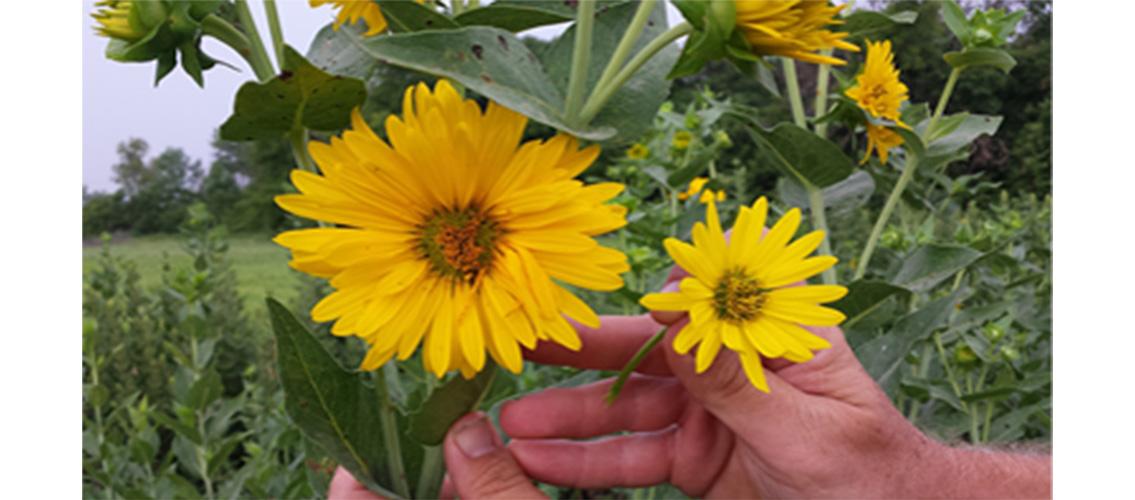
Silphium integrifolium is an American perennial prairie native plant that is being domesticated for a sustainable oilseed crop by researchers at the University of Minnesota. Recent work has resulted in the creation of the first genetic linkage map for this species, an early step toward genetic resources which will support domestication work. This map, combined with a new method which depends on high-performance computing resources allowed for the S. integrifolium self-incompatibility locus to be identified for the first time. The method is effective and efficient, using fewer experimental resources than previous studies to map the S-locus in related species. The method could be applied to other species, as well.
This research was published in the journal Heredity in May 2022: John H. Price, Andrew R. Raduski, Yaniv Brandvain, David L. Van Tassel, Kevin P. Smith. Development of first linkage map for Silphium integrifolium (Asteraceae) enables identification of sporophytic self-incompatibility locus. Heredity 128(5): 304-312 (2022) doi: 10.1038/s41437-022-00530-4.
The MSI PIs involved in the project are Professor Kevin Smith (Agronomy and Plant Genetics) and Associate Professor Yaniv Brandvain (Plant and Microbial Biology). MSI Research Informatics Solutions analyst Dr. Adam Herman consulted with the authors and MSI provided computing resources.
S. integrifolium is one of the plants under study by the University of Minnesota’s Forever Green initiative, a partnership between the College of Food, Agricultural, and National Resource Sciences and the Minnesota Department of Agriculture. Forever Green is dedicated to developing economically valuable crops that will improve soil and water quality.
Image description: Flowers of S. integrifolium from an accession improved for flower size (left) and a typical wild accession (right). Image and description from Forever Green website.
posted on January 10, 2023